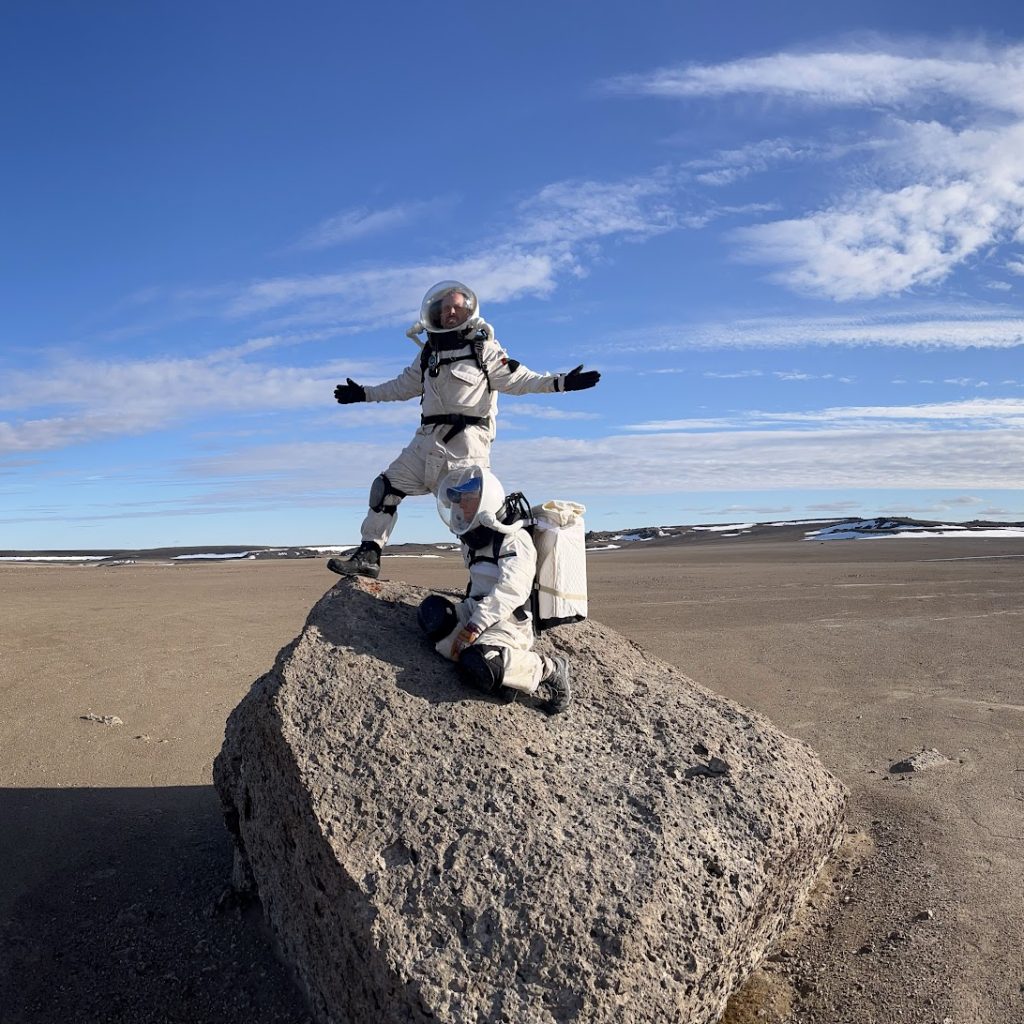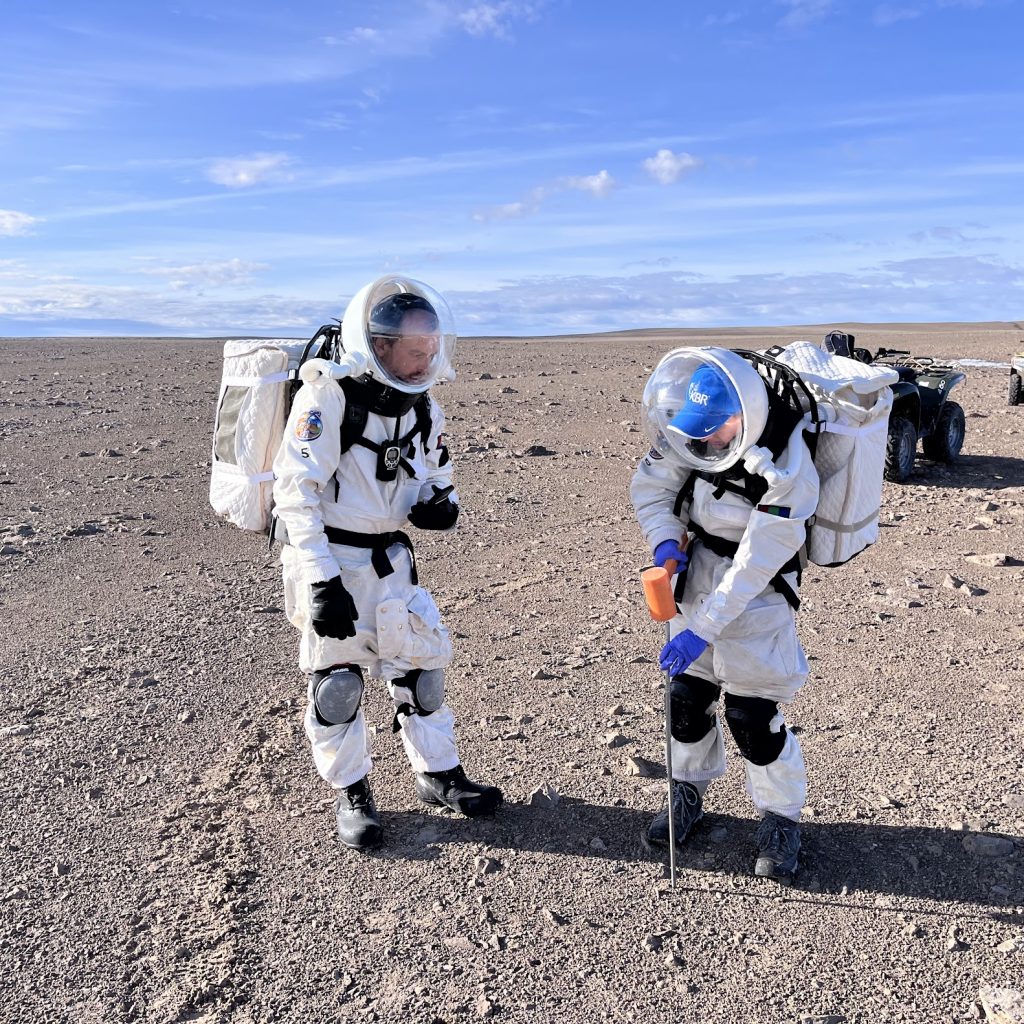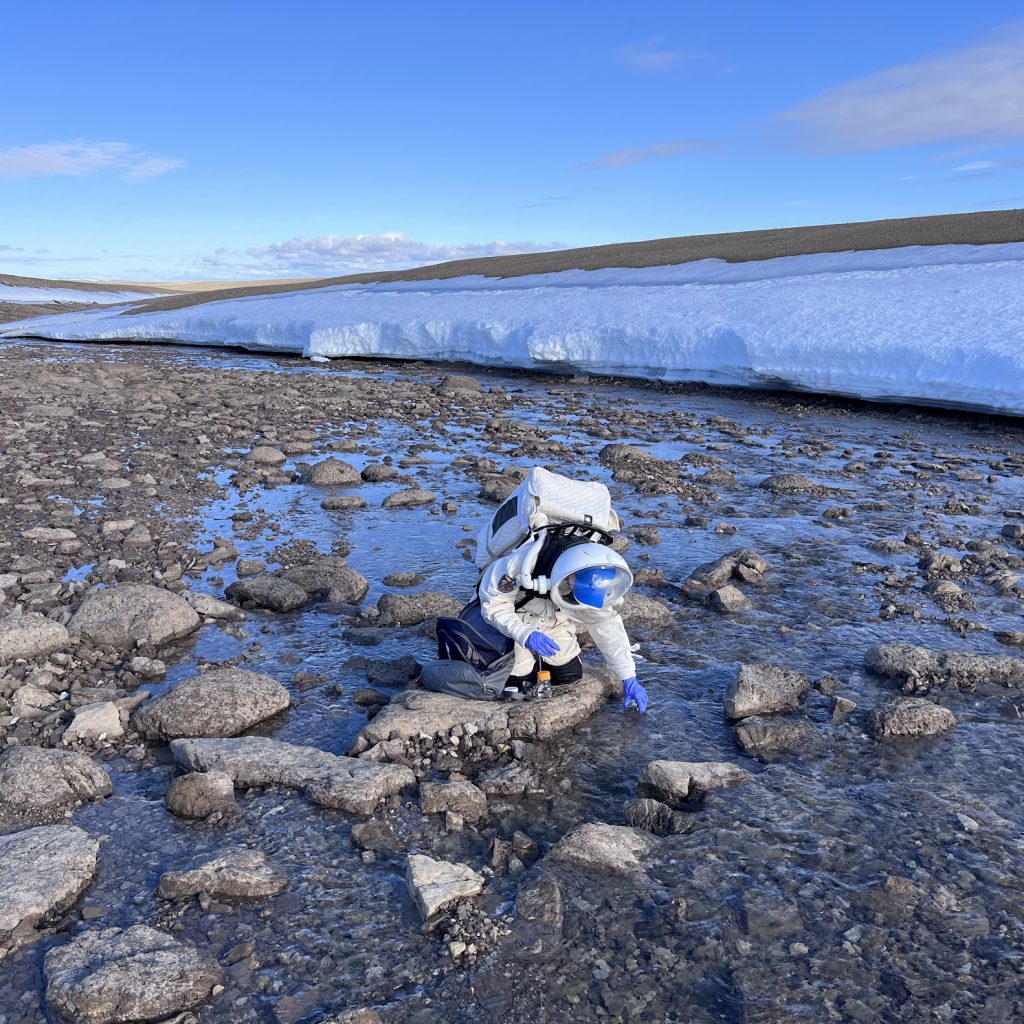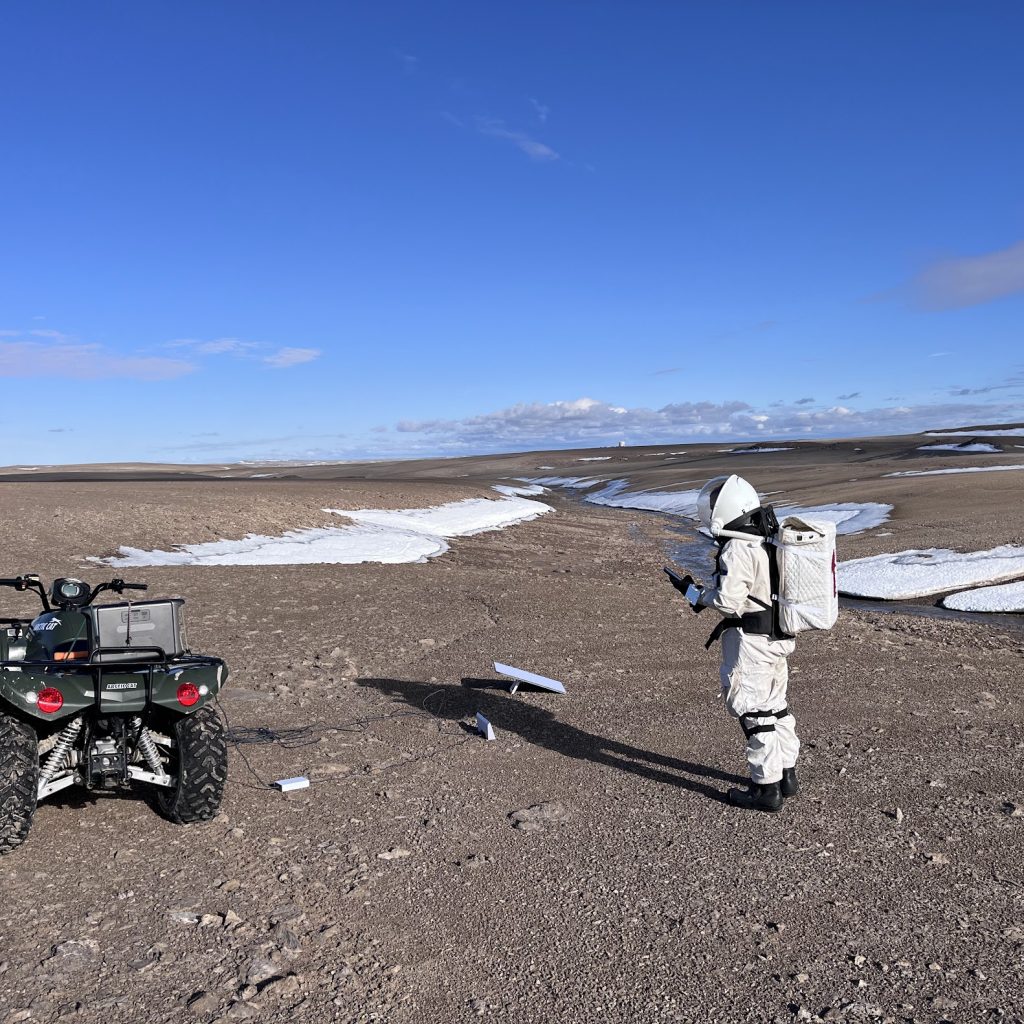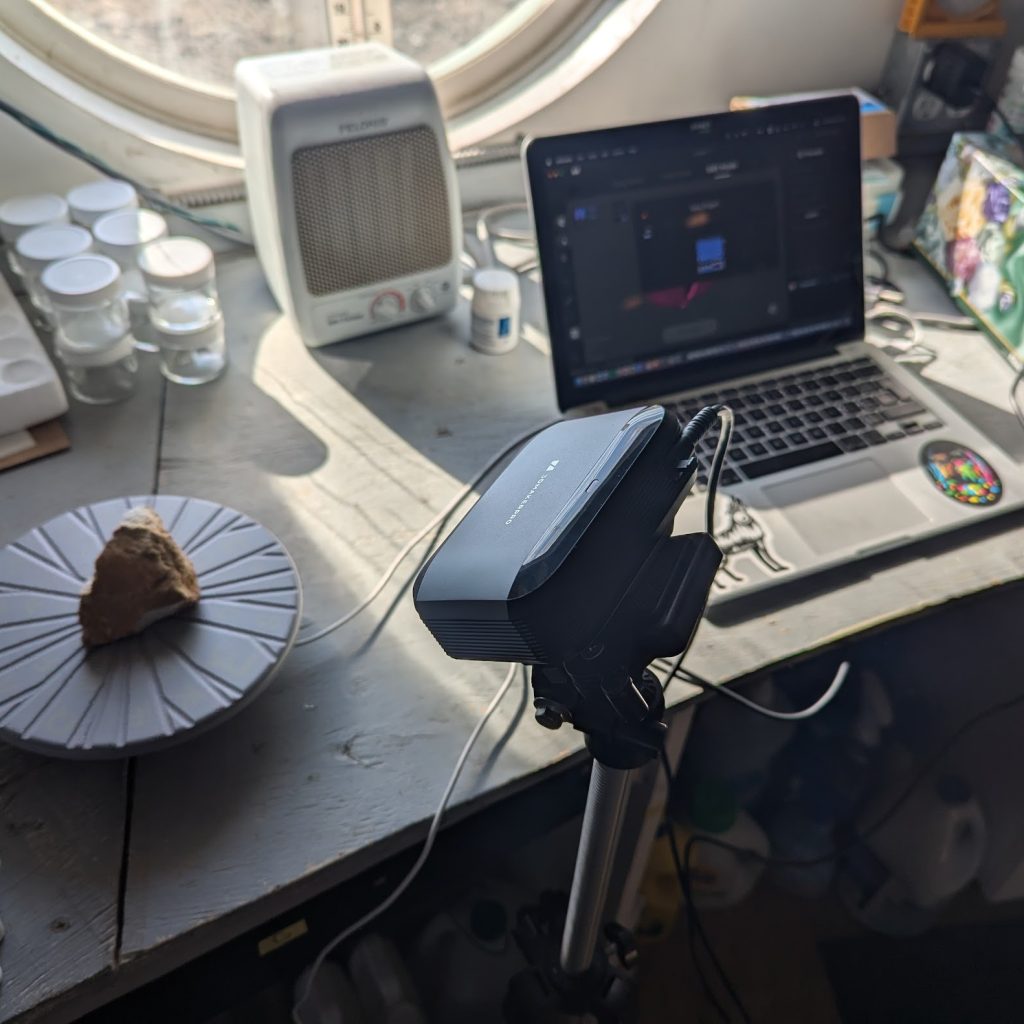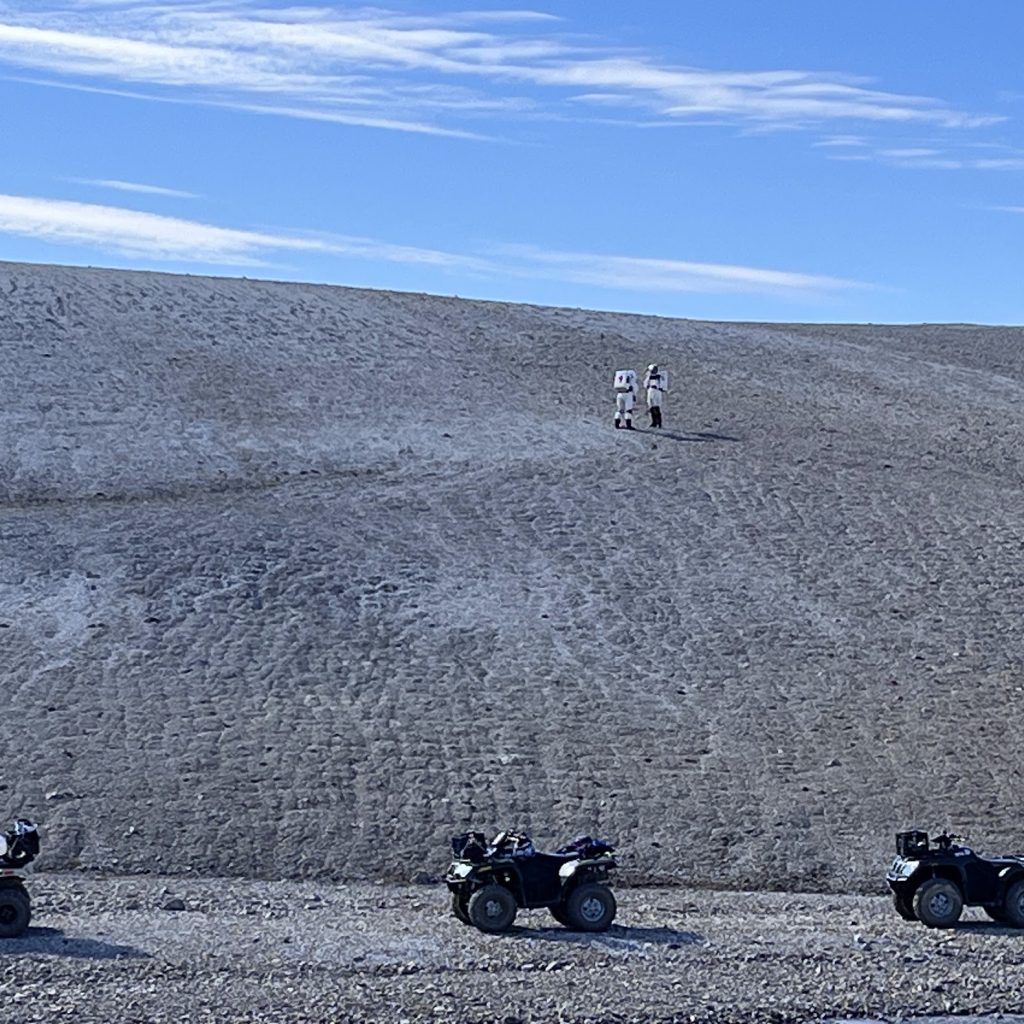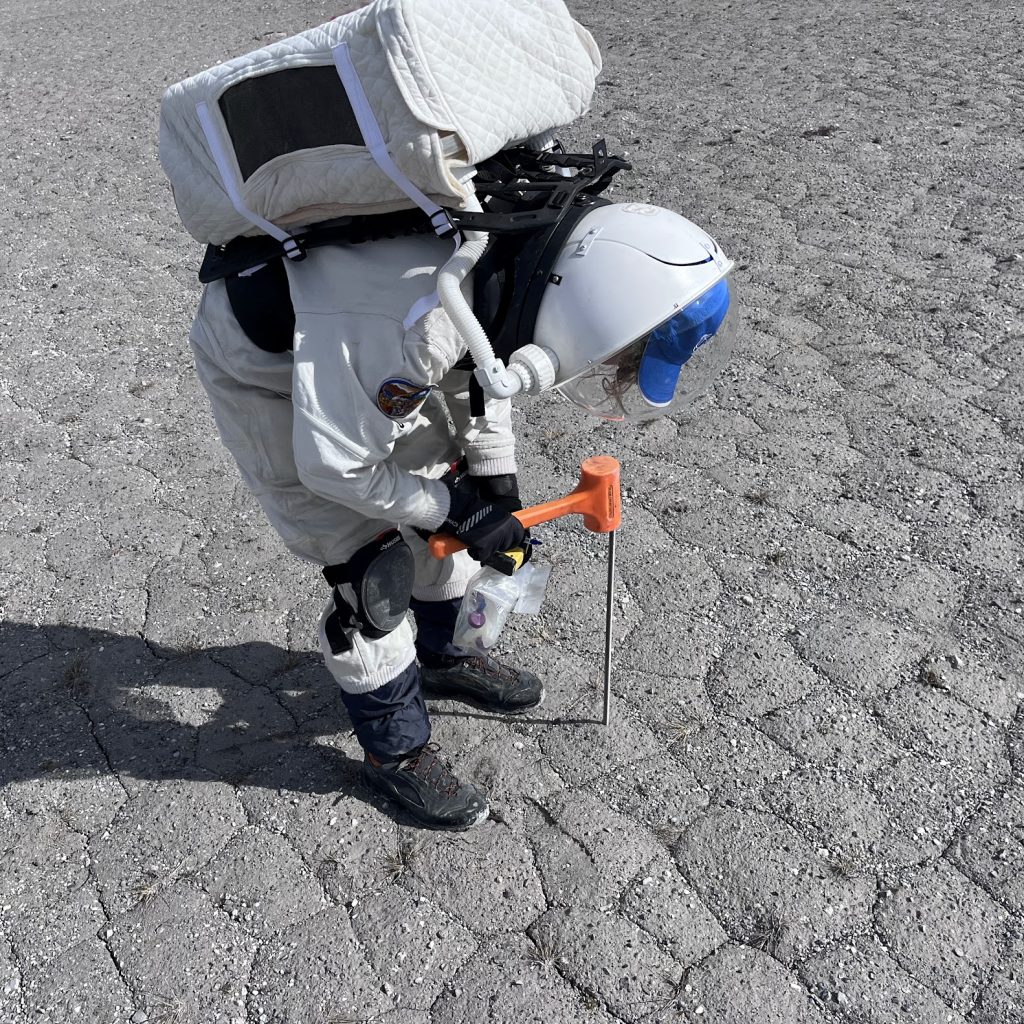FLASHLINE-16 Daily Report 09-07-2024
Author: Michael Andrews – Crew Logistics
This was our last day in true simulation on Devon Island, so we did our best to make it count. The Arctic Wolves crew had the following objectives:
- Take some breccia and permafrost samples in the Haughton crater
- Catch up on some science and report debt
- Take additional permafrost and water samples west of the habitat
Once again, our breakfast was quick while we discussed our plans for the morning. The first EVA of the day would be our most ambitious yet, driving ATVs into the crater to extract samples of breccia: a type of rock matrix that locally tends to be gray, as opposed to the more brown-colored terrain. The crew would split into an EVA team and a habitat team and reconvene at lunch.
The EVA team suited up with more gear than usual and spent some time securing it to the ATV. Health and Safety Officer Swarmer and I stayed behind in the habitat and worked our own tasking.
The morning EVA was our longest so far, heading close to our last pre-simulation expedition. One of the main activities performed was permafrost depth measurement. The crew had performed a similar study in Resolute Bay and dug a hole to determine where the soil ends and the permafrost begins. However, we researched techniques since then and found a less invasive method. A small diameter rod was pushed into the soil and hit with a rubber mallet until we reached the permafrost, and the depth of that rod was measured. Several quick measurements were taken in a cluster to ensure we hadn’t reached a stray rock during one attempt. These cluster depths were averaged for each sample area to result in a final reading.
During the EVA, HSO Swarmer and I worked on various tasks back at base. She continued her inventory system for material on the second floor and also began to develop standard operating procedure lists for tasks like refueling generators and tapping a fuel drum. I installed and trialed our 3D imaging hardware. We have collected several rock samples during our mission, but we do not want to take those specimens off the island and disturb the environment. Ideally the scanner and software that Executive Officer Trevino purchased maps the geometry and texture of rocks to create a virtual clone. I was able to get several test files, but more refinement needs to occur over the next year to properly scan all sizes and types of rocks we have.
The Arctic wolves had a late lunch and prepared for the final EVA of our simulation. The EVA and hab teams would switch, with Crew Engineer Robbins staying as bear watcher. He refueled the ATVs as we suited up.
I led this expedition, and we had a variety of goals:
- Collect water samples for nanoplastics as far upstream as possible to avoid human contamination
- Measure permafrost depth
- Test real-time communication with the research station via a mobile Starlink user terminal
HSO Swarmer had seen many of our EVAs as a bear watcher, and this would be my third EVA. Therefore, we were familiar with simulation rules and our suits, so we were able to rapidly achieve our objectives in the first 90 minutes. This allowed us to use the next 2 hours exploring ATV trails further beyond the research station. The terrain was relatively flat and barren with few landmarks; all the better to create an authentic analog experience. We also found a small hill at the end of the hill that contained a rather large stromatolite. We logged the GPS coordinates and got back to the habitat late at night.
Over dinner, the crew felt proud of what we’ve been able to accomplish: 5 EVAs in 3 days, and all objectives completed! At midnight we are to end simulation and begin preparing the research station for the upcoming winter. It would be an intense day but for a whole different reason. We wouldn’t have much time to clean up, but we needed to leave the habitat in a better state than we received it.
